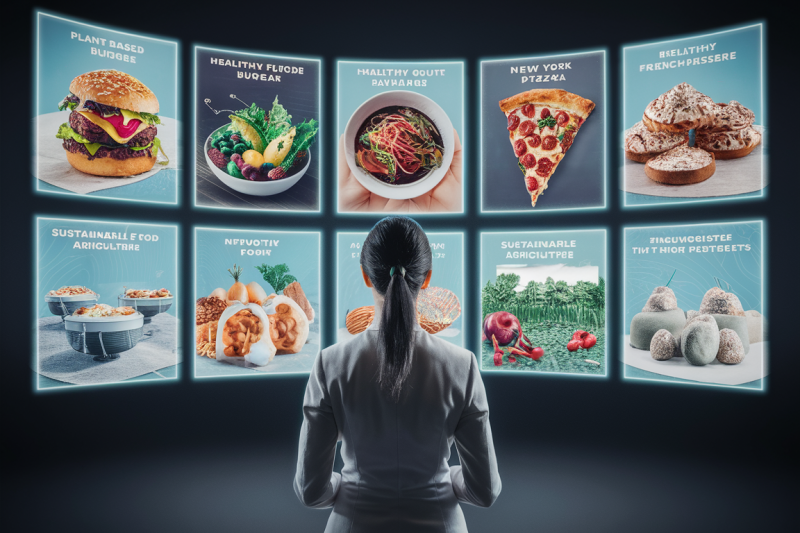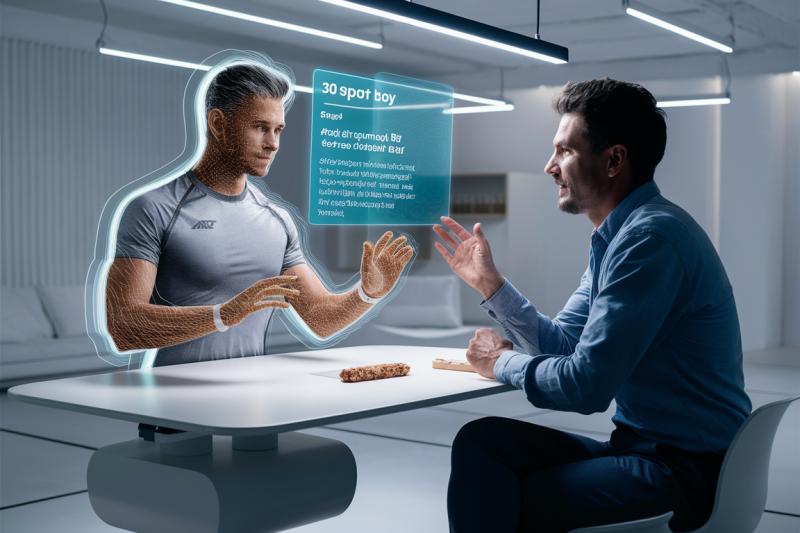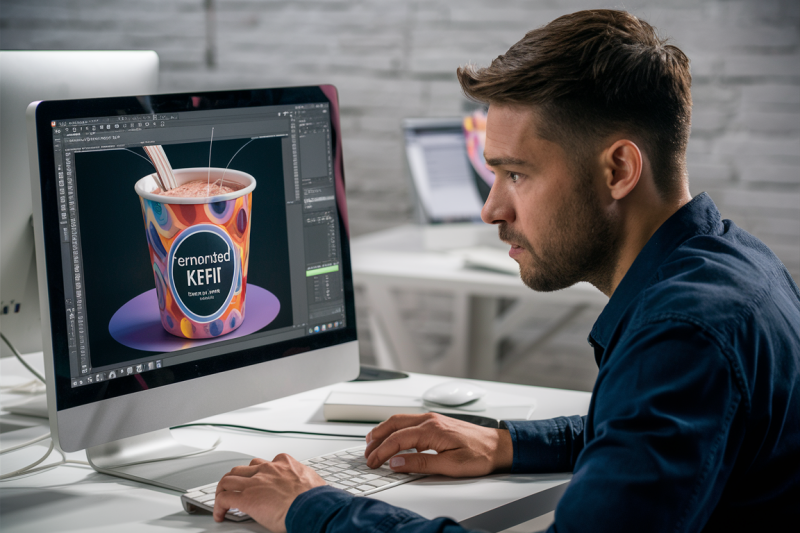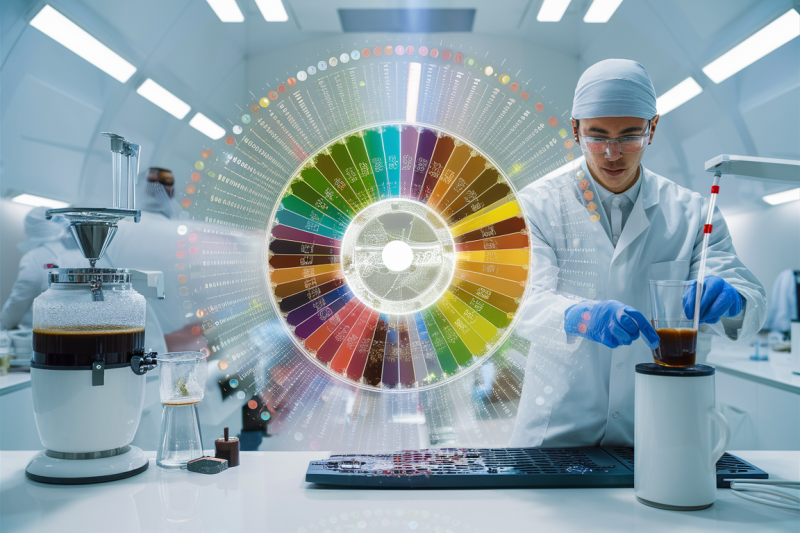
Since we graduated as industrial designers, nothing has revolutionised innovation practice as much as AI. It can accelerate the innovation journey in unprecedented ways, enhancing creativity and effectiveness without big investments or specific IT knowledge. It significantly complements human creativity in relatively simple, easy-to-use ways. In the world of food, the opportunities are plentiful.
If you are a product developer, food marketer, packaging expert, market researcher or innovation manager then continue reading to discover how AI can increase your innovation power.
What is AI powered food innovation?
Let’s start with the basics. What is AI-powered innovation? AI-powered innovation involves applying artificial intelligence technologies to the innovation process. This includes utilising AI algorithms, natural language processing, image generation, and other AI techniques to generate new ideas, develop them further, and enhance decision-making.
While AI can certainly help innovate faster and better, it cannot replace humans. For now, real people are still required to steer the process, make decisions, and reach consensus on particular directions for innovation. However, the synergy between human intelligence and artificial intelligence can undoubtedly yield a richer harvest of innovation.
Exploring the food landscape through the lens of artificial intelligence unfolds a multitude of innovative pathways that can significantly enhance and accelerate the food innovation and design thinking process. The journey from market analysis to the final touches of design not only becomes more efficient but also more enriched, catering to the contemporary demands of sustainability, creativity, and sensorial experiences. Let’s delve deeper into how AI can aid food innovation.
Market Analysis and Food Trend Watching
Understanding food trends is of great importance to anticipate change and often form a pivotal starting point in food innovation trajectories. AI excels in digesting large amounts of data from diverse sources – be it social media, online forums, restaurant reviews, or global news outlets – to identify emerging trends in the food industry. Machine learning algorithms can pinpoint patterns and shifts in consumer preferences, spotlighting ingredients and new food innovations, cuisines, and dining experiences on the rise.

Discover the latest food trends with an AI powered trend study
Consumer Targeting
Understanding the lifestyle and palette of your audience is crucial. AI leverages demographic, psychographic, and behavioral data to create detailed consumer profiles. By analysing online activity, purchase history, and even engagement with food-related content, AI can uncover nuanced consumer segments. It is also possible to create well described and visualized persona’s and interact with them. AI can simulate reactions of your persona to hypothetical products, providing early insights into potential market success.

Create your own persona and have a conversation with this virtual human being
Ideation of new food product concepts and services
Here, AI becomes a muse for creativity. It can create an enormous amount of ideas in a short period of time. In this divergent phase of design thinking, quantity is quality! Generative AI is your best friend here and can propose a gigantic amount of novel food propositions and concepts by cross-referencing an extensive database of recipes, food pairings, products, designs, packaging, brands and cultural food practices.

Invite an ‘AI colleague’ to your brainstorm session for extra ideas
Idea detailing
AI can help develop concepts in detail. It is a great creator of new product and brand names. The image generators can, with some practice, help to quickly visualise an idea where otherwise many days might be spent. It can assess the sustainability, feasibility, and scalability of ideas, ensuring they not only tantalise the taste buds but also align with future-forward principles and market viability.

Let AI help you to visualise, refine and optimise your ideas
Idea testing and selection
AI can assist in evaluating ideas. Initially, it can establish relevant criteria for success and subsequently score ideas against these benchmarks. Feedback can then be solicited on how these ideas might be improved. Whether it concerns taste, environmental impact, technical feasibility, or commercial viability, with the correct directives, AI tools can provide estimates and aid in selecting the very best ideas.
Recipe development
In the practice of recipe development, AI acts as both scientist, chef and artist. It can calculate optimal ingredient ratios for desired taste profiles, nutritional values, and texture. We often get the question, how does Ai know if something tastes good? This ‘artificial taste sense’ is formed by data analysis and pattern recognition. For instance, A.I. searches extensive recipe databases to discover popular ingredient combinations, based on positive feedback from users. In addition, food pairing databases, chemical molecule structures, cultural traditions, taste trends and personalisation play an important role.

Let AI help you to create the right flavour design
Product and packaging design
Finally, in the realm of design, AI offers tools for visualising food presentations and packaging in stunning detail, aligning with brand identity and consumer expectations. It can come up with new shapes, ingredient usage and presentations far beyond our imagination. Sometimes, impossible to manufacture directly, but is can spark our own creativity and making us come with new ideas we would noy have thought about if we had not used the AI tools.
AI is an innovation partner
In short, artificial intelligence is not just a tool but a partner in the field of food innovation, providing a fusion of efficiency, creativity and deep insights. Artificial intelligence is not meant to displace human creativity but rather to enhance it, acting as a powerful ally that can accelerate the innovation journey, making it not only faster but also more creative.
Again, integrating AI into your food innovation practice does not require significant investment. Subscriptions cost just a few tens of euros a month and can lead to significant gains. The mantra should be clear: Start doing AI! If you dare to play and experiment, you will gradually become adept and gain understanding of how AI can help you in your profession.
As with any traditional food innovation process, expertise and experience in organising innovation and leading such projects are essential. This expertise, which we as food innovators have been bringing in for years, long before the AI era, has enabled us to help countless companies realise successful food innovations (see our cases).
Start your own AI powered innovation project
So if you are planning to innovate your food portfolio and want to fill your innovation funnel for 2024-2025, then don’t hesitate to contact us.
Let’s see what an AI-driven food innovation process could look like for you. Apart from a great outcome, you will immediately teach yourself in the ins and outs of AI applied in your professional field! We will leave you with a great AI toolkit that empowers you to replicate the way of working and structurally bring your innovation skills to the next level.
All images were created with help of AI image generator Ideogram
